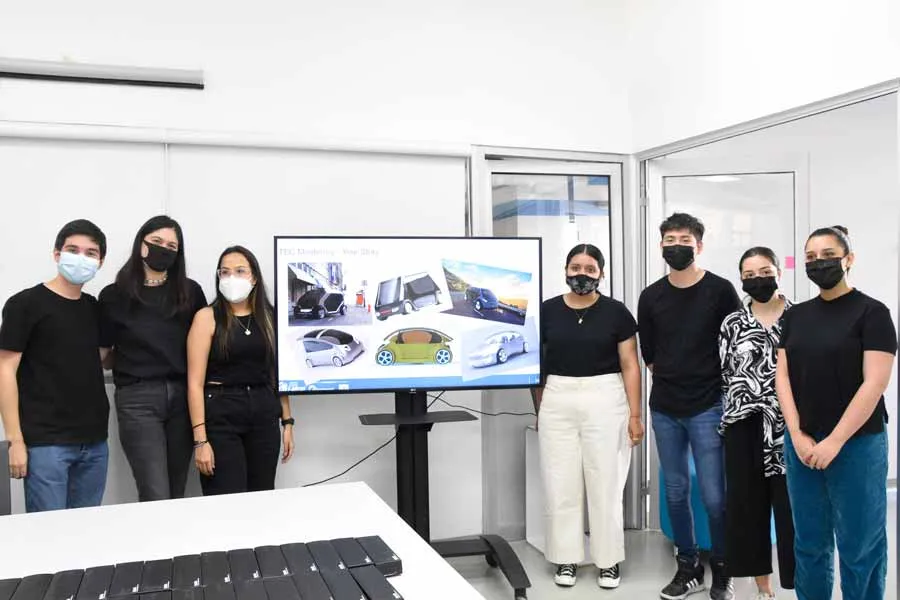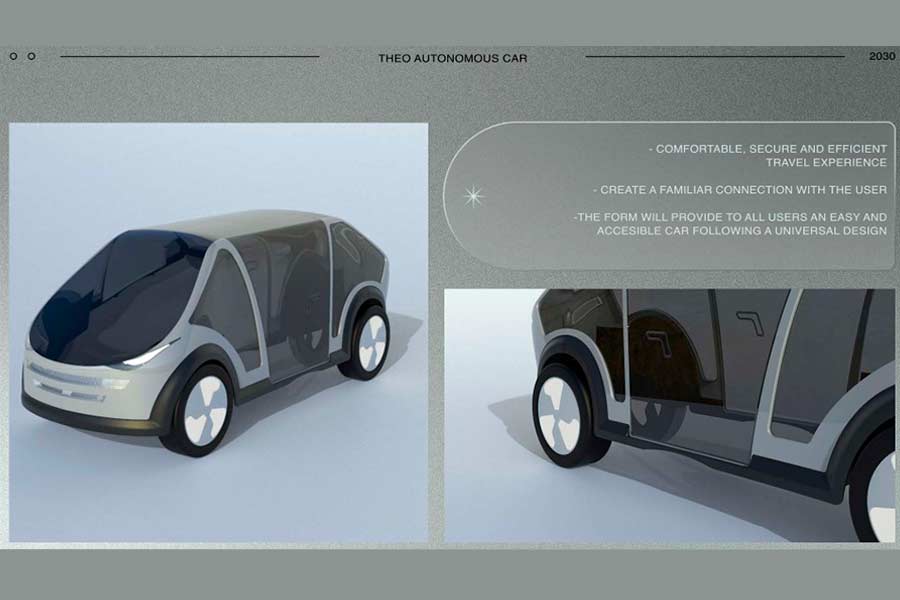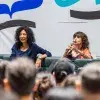Cocoa beans were the inspiration behind students from Tec’s Monterrey campus designing an autonomous vehicle model for 2030, which won them first place in the international Steel E-Motive competition.
Andrea García, Sergio Salazar, Regina Sánchez, Sharen Sánchez, and Daniela Marroquín are the five students from the School of Architecture, Art, and Design who created the competition’s winning design.
“We thought of the cocoa bean for our design because of its shell. We wanted to transfer that feeling of protection and security to our vehicle design,” said Sergio Salazar, an Industrial Design student.
Steel E-Motive is a World Auto Steel program, an automotive group of the World Steel Association, in which engineering solutions using Advanced High-Strength Steel are designed and tested to adapt to the latest trends in the mobility sector.
The contest was aimed at the main design schools around the world and promoted by companies belonging to this program, which include steel company Ternium.

“We thought of the cocoa bean for our design because of its shell. We wanted to transfer that feeling of protection and security to our vehicle design.” - Sergio Salazar
In addition to Tec de Monterrey’s teams, students from educational institutions around the world took part in the competition, from countries such as the United Kingdom, Italy, the United States, and Japan.
Members of the winning team will attend the Consumer Electronics Show (CES) in Las Vegas in January 2022.
This exhibition is one of the most recognized internationally, where the latest developments in the world of electronics are presented.
Designing the future of autonomous vehicles
“Something that was challenging for everyone was finding the balance between what’s already familiar to us and what’s coming in the future, above all so that people can recognize this new technology,” said Industrial Design student Andrea García.
The competition began in February of last semester, ending in July. During those months, the teams had to think up and design an autonomous vehicle for 2030.
“Our biggest challenge was that none of us had ever done automotive design,” said Daniela Marroquín, an Industrial Design student.
During the months of the competition, experts from Ternium gave talks and training to the students to teach them about the latest developments in the automotive industry.
Defining the ‘beauty’ of steel
The young students agreed that transferring a more attractive view to the vehicle’s design was one of their main objectives during the development of the project.
“I think that what set our model apart from others was that we focused on the aesthetics of the car.
“It was important for us to deliver a design that conveyed passenger safety, but at the same time, allowed the beauty of the steel in the car to be noted,” said Andrea García.
One of the main design features, she added, was the size and placement of the windows, which allows passengers to enjoy the scenery while riding in the vehicle.
“It was important for us to deliver a design that conveyed passenger safety, but at the same time, allowed the beauty of the steel in the car to be noted.” - Andrea García

Acknowledging the winners’ dedication
Rodolfo Barragán, Dean of the School of Architecture, Art, and Design, Monterrey Region, congratulated the team and the teachers who assisted the students on the project.
“This is a very special recognition to the LDI students and professors, Mario Ménez and Luis Amaya from the EAAD Design Department, for honoring the commitment to World Auto Steel and Ternium,” he said.
Professor Mario Ménez explained the importance of young people taking part in these competitions, as he believes they open the doors to professional life.
“This type of experience is important for them, as it allows them to see what they’re capable of, or where they need to improve to reach the next level,” he said.
The winning team’s design will also be shared with consulting firm Ricardo, also part of Steel E-Motive, so that details for a vehicle’s exterior can be considered.
Don’t leave without reading:





